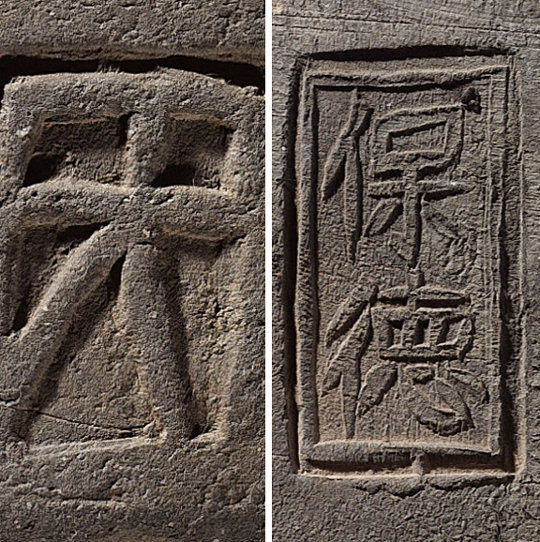Distinctive calligraphic style of Balhae
Distinctive calligraphic style of Balhae
Posted July. 06, 2018 07:35,
Updated July. 06, 2018 07:35

The tombstone of Princess Junghye (780), the tombstone of Princess Junghyo (792), the Buddhist tombstone of the Year of Hamhwa 4 (834) are some of the examples that bear the distinct calligraphic style of Balhae, a multi-ethic kingdom that sprawled across Manchuria and the Korean Peninsula between the year of 698 and 926. With the base of formulation rooted in Korean calligraphy, the writing of Balhae is similar to the calligraphies of the late Goguryeo or Unified Silla, with the hints of Chinese variations, which reflects the timing of the formulation of the letters.
First of all, the direction of strokes lacks coherences, and the sizes of letters are uneven and unbalanced. The vertical and horizontal strokes are aligned but only in a disorderly fashion. The tips are facing upward, which reflects a Chinese influence. The width and the length of strokes are irregular, and the letters are rather vertically stretched, which stands for passion, desire for expansion, progressiveness, power of execution, and the spirit of enterprise. In Georangukji, a book on the history of the Khitans, there is a line that “It only takes three Balhae men to subdue a tiger.”
The traces of Korean calligraphy can also be found in corner roofing tiles from the era of Balhae, which reaffirms its undeniable Korean ethnicity. Wild and free, the writing style of Balhae is different than the Chinese one that is schematic and complaint to rules, and its soft lines are also differentiated from the writings of the Mohe people.
A closer look at Balhae’s inscription roofing tiles reveals a lack of consistency in terms of bilateral symmetry or the size of letters as well as the direction of strokes. The angle of lines is far from steep; they are soft and round. Those findings attest to the unique colors of the Korean race, which are characterized as free, energetic, rushing, fickle, yet virtuous.
“Who are the Daes? They all come from Goguryeo. What about the land they own? Whose land is it? It belongs to Goguryeo, and they had expanded their territory by exploring to the east, the west, and the north,” said Yoo Deuk-gong, a scholar of practical Confucianism from the Joseon Dynasty, in the preface of Balhaego, a book on the history of Balhae. The scholar’s claim may well be backed by the calligraphic style of the country.







